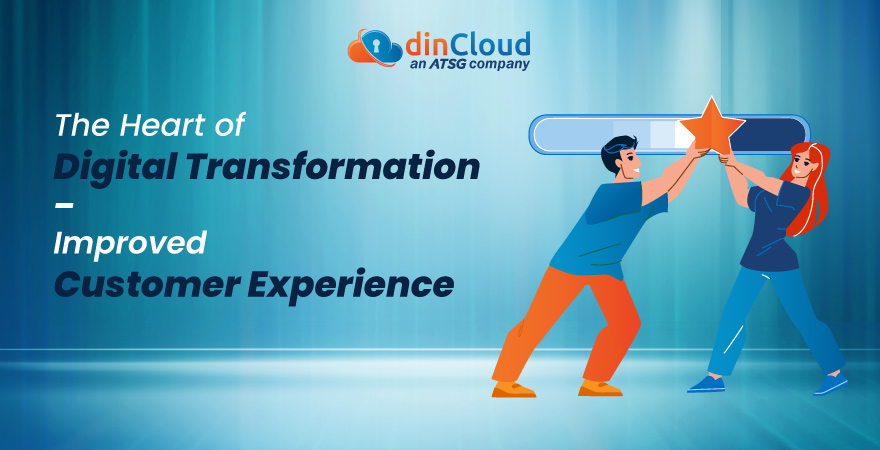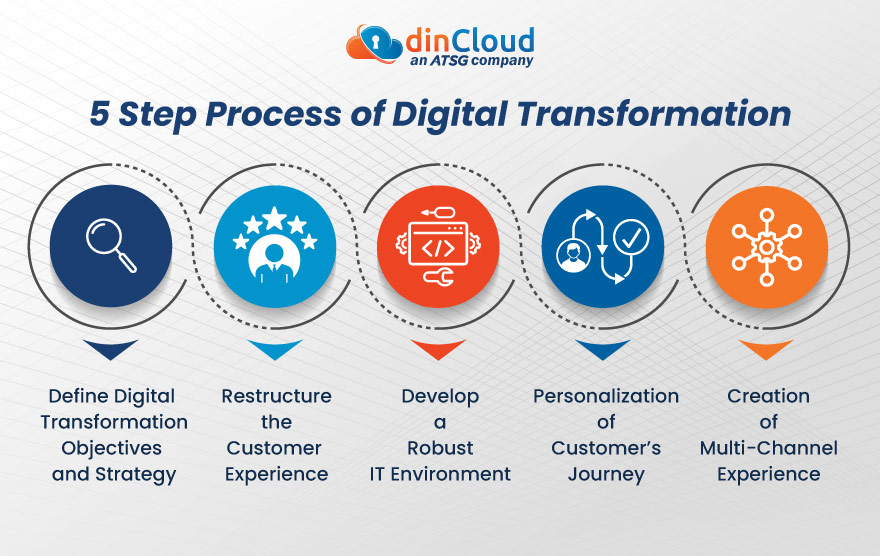As businesses transit from a disruptive global pandemic, one thing is for sure; the world as we knew it has completely changed today. Certain adjustments to our work and personal lives, which were required for survival, have now become a business necessity.

As consumers adopted new digital ways of interaction, their expectations from businesses have further escalated. Enterprises that are unable to keep up with this momentum, end up risking their brand name, and alienating their customers.
Today, digital transformation has allowed enterprises to build their business model around the new market realities. This change in enterprise operations is primarily dictated by the evolved and always-connected customers. Successful enterprises are looking for innovative ways to ensure they deliver an unmatched customer experience (CX) to retain them over the long run.
Digital Transformation and the Current Scenario
According to a survey, 35% of enterprises admit they were able to improve their customer’s experience and operational efficiency through effective digital transformation. Around 38% of top enterprise executives plan on gaining a competitive edge by investing huge capital in technology.
Globally, businesses are estimated to spend a total of US $2 Trillion on digital transformation, during the year 2022. It is almost a 100% jump from the year 2018 when a total of US $1 trillion was spent on digital transformation initiatives.
Despite all the benefits, the State of Digital Business Report stated that even now, around 47% of enterprises have not adopted digital transformation strategies. The same report stated that 55% of the enterprises even admitted that if they do not start their digital transformation journey soon, it might reflect poorly on their market share and financial viability.
Digital Transformation Explained
Digital transformation/ can be defined as the process in which enterprises go through fundamental changes in their operations, and integrate technology in all the main areas of their businesses. One of the major purposes of digital transformation is to deliver the maximum value to their customers, and provide them with a consistent experience, wherever and whenever they desire.
The latest research revealed that around 50% of the businesses acknowledged that customer experience and satisfaction was the leading factor in why they decided to undertake digital transformation initiatives.
Digitalization helps businesses create highly engaged customers, which are four times more likely to recommend your new and improved brand to other people. Improved customer experiences compel customers to increase their buying frequency by as much as 90%.
Deloitte’s report stated that digital transformation resulted in a 45% revenue growth for businesses. 41% of these businesses reported that once they stepped onto the road to digitalization, they witnessed improvement in their sales.
The aforementioned statistics make one thing very clear; in the new digital age, customers are usually “pulling all the strings”. So, it is imperative for businesses to not only meet customer expectations but exceed them.
Pleasing the Digitally Conscious Customer
Digitalization has left a huge impact on customers’ buying behavior, and expectations. The constant access to smartphones, numerous applications and Machine Learning (ML) have enabled modern buyers to get whatever they desire, at any time.
The digital-first customer experience has forced businesses to rethink their customer interactions in the following way.
- Business-to-Business (B2B) Sales Teams: B2B sales teams have moved towards social media platforms, in order to reach out to their customers. They work towards the education of their customers and thrive to develop a good relationship with them, by providing their not-notch offerings and expertise.
- Marketing Department: Enterprises have shifted their marketing tactics from direct mail and bill boards to highly targeted messages and data-driven marketing strategies.
- Customer Service Department: Customer support has gone far beyond phone calls or faxes. Instead, a wide range of channels is being used in today’s customer support ecosystem. Some of those digital channels include communities, review forums, and social media platforms.
5 Step Process of Digital Transformation
Enterprises often start off their digital transformation journey, but they fail to understand how to engage with their customers, and deliver on their expectations.

If you want to succeed in your digital transformation journey, you must consider the following mentioned points that will help your business navigate this journey.
1- Define Digital Transformation Objectives and Strategy
Technology is evolving at such a fast pace that sometimes, it is difficult for even the most established businesses to keep up with it. The competitive marketplace is rapidly being introduced with new ideas. The need to have a long-term strategy is imperative for three reasons; adaptation, competition, and survival.
Enterprises must have a clear idea of where they stand today, and where they wish to reach tomorrow. Another equally important question is, how exactly do they plan on doing this?
They can harness the true potential of digital transformation, only if they have in-depth know-how about their core competencies and the technologies required to improve them.
2- Restructure the Customer Experience
Businesses should also work on developing new experiences to fulfill customer demands. A good relationship with customers is important, as it has a direct impact on the perception of the brand in the marketplace.
According to the Harvard Business Review Survey, 40% of the reporting enterprises put an improved customer experience as the top reason for digitalization. The survey also reported that around 72% of the respondent organizations saw digital transformation as an opportunity to build improved relationships with their customers.
Investment in technology can be your best bet to enhance the overall customer relationship.
3- Develop a Robust IT Environment
Enterprises’ IT infrastructure must be agile and flexible to power up their digital strategies. 86% of enterprises think that Cloud Computing technology sits at the heart of digital transformation.
Cloud-based services and solutions are fast, agile, scalable, and dynamic. The Cloud helps businesses test new projects to meet customers’ demands in a seamless and cost-effective manner.
Businesses can also have a holistic view of their customers by leveraging Cloud-powered Software as a Service (SaaS) solutions, Big Data analytics, and utilizing customer databases in a secure and compliant manner.
4- Personalization of Customer’s Journey
A survey by Accenture found that enterprises that recognize customers by their name and are aware of their purchase histories are 75% more likely to attract and retain customers.
All the successful and forward-thinking businesses are now working towards treating their customers as unique individuals. Customers even allow these businesses to use their personal data in exchange for personalized services.
Investments in cloud-powered Customer Relationship Management (CRM) solutions can help companies analyze customer interactions with them, and leverage this data to create targeted and personalized messages.
5- Creation of a Multi-Channel Experience
Today’s fierce market competition has given a much higher bargaining power to the customer, in the sense that they expect a 24 x 7 x 365 available customer response team for instant gratification.
In the long run, businesses that offer immediacy, personalization, and accessibility to their customers are already winning the race.
Whether it is in-store shopping, online browsing, writing reviews, or asking a question, each customer interaction can be used by enterprises to create a unified digital profile. This way, they can ensure a seamless multi-channel experience.
Conclusion
Today’s fast-moving world has made digital transformation a “need of the hour”. Digitalization is a complex domain, which is not just about technology. Cloud-based adoptions, personalization, CRM software, and delivering a customer-friendly experience can all help enterprises design a seamless digital experience for customers. This will help businesses transition from surviving to thriving.
If you want to put your enterprise on the road to a successful digital transformation, feel free to contact dinCloud, an ATSG company, for agile and flexible Cloud Computing solutions.


